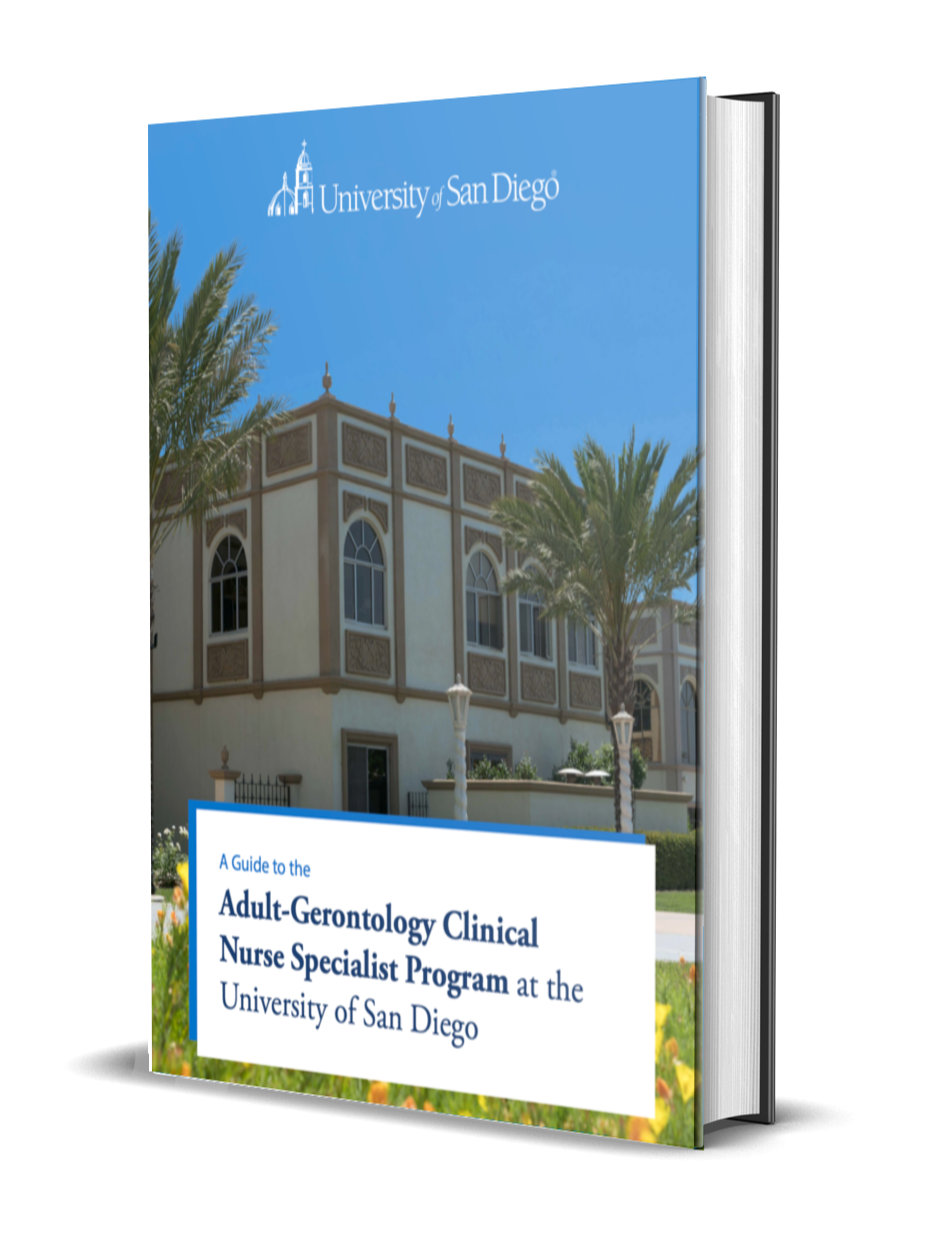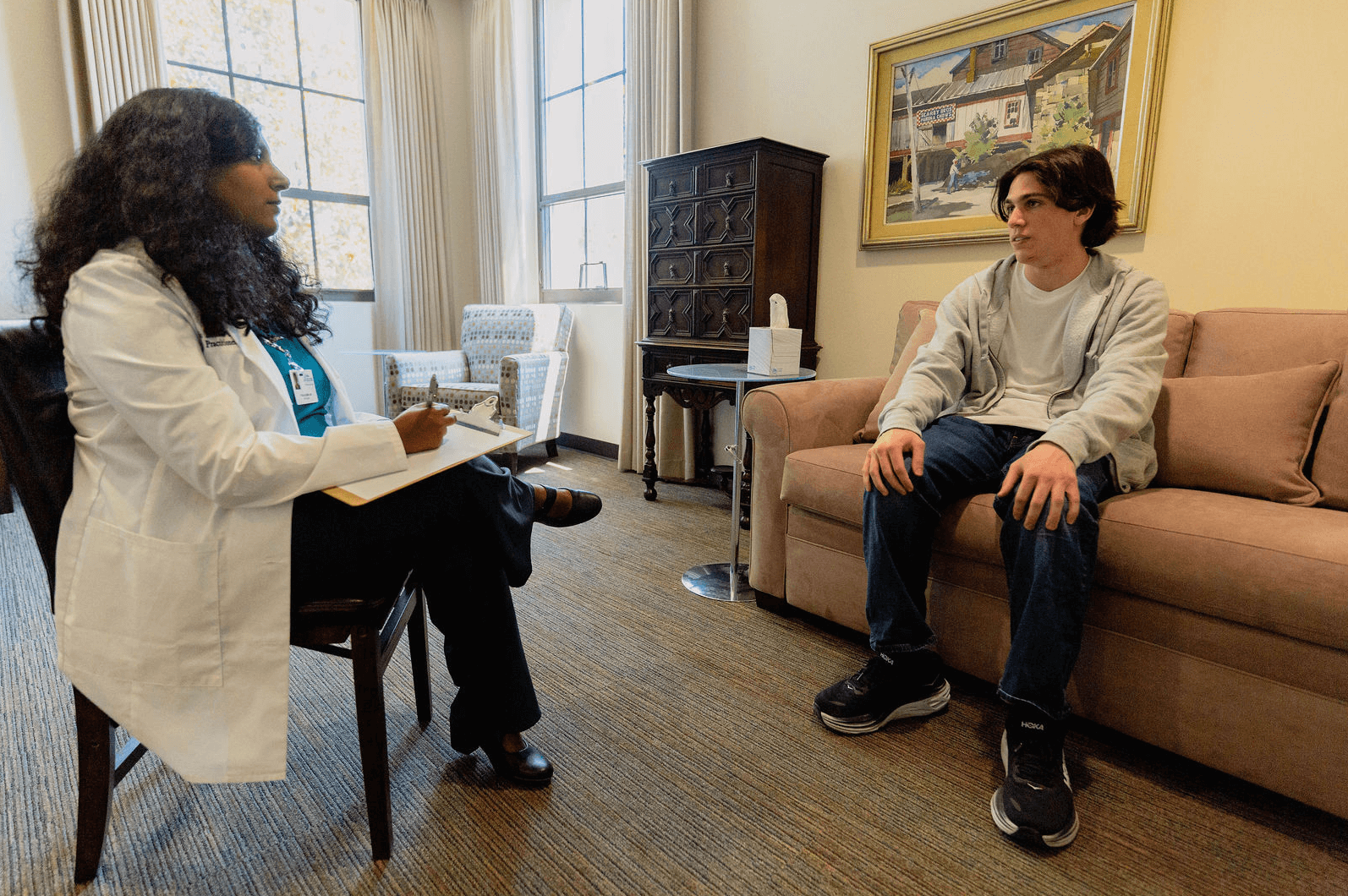
Discover the Benefits of a Nursing Degree From USD
The information in this blog post is for informational purposes only and is not intended to replace medical, financial, or professional advice.
Nurse practitioners are essential to an efficient, effective healthcare system. Their comprehensive training places them in positions across a variety of healthcare settings. Whether you work in an acute care hospital or an outpatient clinic, you’ll have worked alongside nurse practitioners in many instances.
If you’re considering a return to school for an advanced nursing degree, you may be wondering what’s required to become a nurse practitioner and whether that’s a good career move for you. You should know that the job market for nurse practitioners is one of the fastest-growing in the nation, making it a career well worth your consideration. Job growth for nurse practitioners has doubled in the last twelve years alone and risen 9% in just one year. The Bureau of Labor projects the number of nurse practitioner roles will grow by 46% (359,400) by the year 2031.
There’s a good reason behind the increasing demand for nurse practitioners. You can trace this need to the current “graying” population, rising life expectancy, physician shortage, and growing emphasis on preventative care, among other factors.
If you’re curious about what it looks like to work as a nurse practitioner, keep reading to learn more about what the job entails.
What is a nurse practitioner?
Nurse practitioners are vital to healthcare and are in high demand — but what do nurse practitioners do? An NP is a healthcare provider that emphasizes the health and well-being of the whole person. Trained with specialized knowledge and clinical competency, nurse practitioners work in all healthcare settings and focus on health promotion, disease, prevention, and health education and counseling.
The NP is an expanded role of the nurse. Both individually and alongside other healthcare professionals, NPs carry out the roles of both nurses and physicians. In addition to the caregiving RNs provide, NPs can diagnose and prescribe treatments to patients. The diverse skill set required to be an NP makes it one of the most versatile jobs in the healthcare industry.
History of nurse practitioners
Today, the U.S. employs hundreds of thousands of nurse practitioners. But how did it get to be such a popular job? What is the history behind nurse practitioners?
In 1965, President Lyndon B. Johnson signed the Medicare Act of 1965 into law, establishing Medicare and Medicaid for the country. This produced a rapidly increasing need for high-quality primary and acute care across the nation and strained the established healthcare model. Around the same time, the American Nursing Association published the work “First Position on Education for Nursing,” which inspired a move towards higher education involving technical and practical learning for nurses.
Dr. Loretta Ford saw the social and political environment as an opportunity to expand quality clinical education for nurses. In 1965, Dr. Ford teamed up with Dr. Henry Silver and founded the first nurse practitioner program at the University of Colorado. Two years later, the first NP master’s program started at Boston College, and by 1973, the U.S. offered over 65 NP programs.
The popularity of nurse practitioners spread swiftly. In 1985, the American Academy of Nurse Practitioners (AANP) was established and created the national NP database. In 1993, the AANP formed the American Academy of Nurse Practitioners Certification Program.
Despite the growing popularity of nurse practitioners, though, the occupation was met with skepticism since its beginning. A number of critics questioned the caliber of care given by advanced practice nurses coming from nurse practitioner programs. In 1994, Mary O'Neil Mundinger, who founded the first clinical nursing doctoral program in the country, responded to criticism in her publication “Advanced Practice Nursing—Good Medicine for Physicians.” In her article, she affirmed the capabilities of nurse practitioners to serve professional primary care and highlighted the distinct expertise and experience of NPs.
Since the 1990s, the role of the NP has become integral to our healthcare system. The need for the unique, patient-centered care of nurse practitioners rises more every day.
A brief exploration of the different nurse practitioner specialties
Because NPs are so widely needed, there are a number of different nurse practitioner specialties that NPs cover. Just a few of these specialized areas include:
- Adult-Gerontology Acute Care NP (ACNPC-AG): These NPs serve acutely ill adults in places like emergency departments, inpatient hospital floors, and cardiology departments.
- Pediatric NP (PNP): PNPs work with kids in settings such as outpatient family practices or inpatient units, and care for children from birth up through young adulthood. PNPs can also specialize in treating specific conditions in specialty clinics.
- Family NP (FNP): Those working as FNPs work with people in all areas of life. As one of the broadest NP specialties, FNPs usually find a more specific passion, like gynecology or diabetes care, through working with a diverse group of patients.
- Psychiatric Mental Health NP (PMHNP): PMHNPs specialize in caring for patients struggling with a variety of mental health issues. These NPs work in places like addiction clinics, inpatient settings, and even issue at-home care.
- Women’s Health NP (WHNP): These NPs help women from adolescence into the end of adulthood with women-specific care like obstetrics and gynecology. A few places WHNPs work include labor and delivery wards, outpatient clinics, and college health.
- Certified Registered Nurse Anesthetist (CRNA): CRNAs work in the nice area of administering anesthesia and related medications. They also work with supervising and taking care of people receiving or recovering from anesthesia.
Why is there such a demand for nurse practitioners today?
Research shows the positive impact of nurse practitioners on health care. Nurse practitioners blend the caring, compassionate attitude behind nursing with the practical, tangible care given by physicians and are responsible for a number of positive effects in the healthcare world. Patients of nurse practitioners overall typically:
- Get readmitted to the hospital less
- Have fewer preventable hospitalizations and avoidable emergency room visits
- Are more satisfied with their care.
The U.S. has already been experiencing a nurse shortage in recent years, which is expected to grow in the upcoming wave of Baby Boomer era nurses resigning. This factor, combined with a lack of access to health care, especially in rural areas, and the impact of the COVID-19 pandemic have contributed to efforts to expand the scope of healthcare practice. The roles of nurse practitioners strengthen some of the weaker parts of the healthcare industry, making it a much-needed job, today more than ever.
Become a nurse practitioner at the University of San Diego
Want to become a nurse practitioner, but are unsure how to start?
At the University of San Diego Hahn School of Nursing and Health Science, you can follow one of three tracks toward a career as a nurse practitioner. Those looking to pursue a master’s in nursing can enter the MSN with a Nurse Practitioner track. But if you’re considering an even more advanced degree, you could pursue a Doctor of Nursing Practice (DNP), as well. For this degree, the USD School of Nursing has two pathways to consider: the BSN to DNP route or the MSN to DNP route. And remember — a nurse practitioner is just one of the many answers to the question, “What can you do with a doctorate in nursing?”
The world needs people who are passionate about caring for the health needs of others across the nation in a competent, practical way. USD is committed to nurturing the passion and potential of those looking to enter the field of nurse practitioners. Graduates of any of USD’s tracks will enter the workforce with a comprehensive knowledge and skill set that can see to health-related needs of all kinds.
Want to learn more about the programs of the Hahn School of Nursing and Health Science at the University of San Diego? Do you think pursuing a career as a nurse practitioner at USD is the next step for your career? Click below to request more information today.
The information provided by USD’s Hahn School of Nursing and Health Science is for informational purposes only and is not intended to replace professional medical or financial advice. This includes, but is not limited to, blog posts, eBooks, webinars, emails, graphics, social media posts, and other content. Always seek the guidance of your physician or a qualified medical or financial professional.
A Guide to the University of San Diego's Adult-Gerontology Clinical Nurse Specialist Program
The University of San Diego's nursing program ranks among the best in the nation. But that's not the only reason future students walk through our doors to pursue one of our graduate degrees. Download our guide for an in-depth look at the Adult-Gerontology Clinical Nurse Specialist program and learn how our rich heritage of excellence in nursing education can help you achieve your academic and professional goals.
GET THE GUIDE









